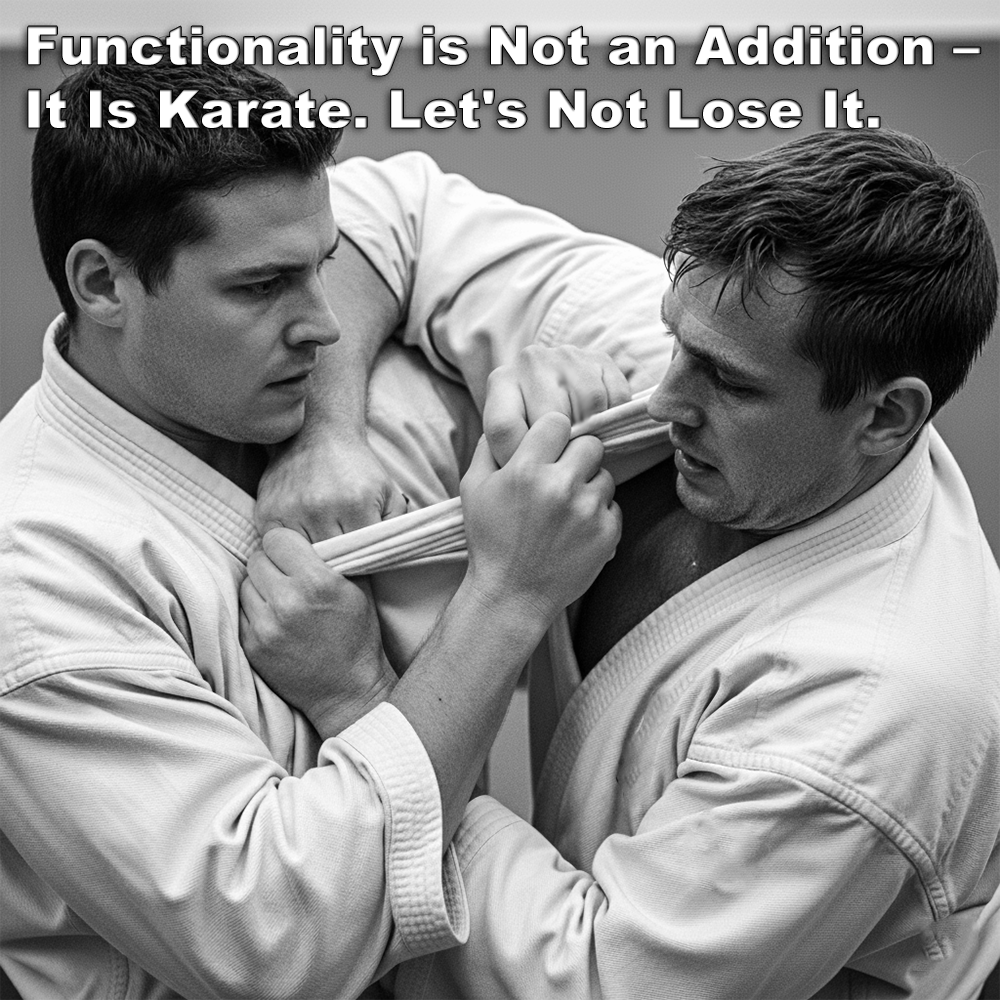
(Approx 2 minute 15 second read)
Someone commented on a recent article of mine where I spoke about the realities of self-defense, where violence is messy, fast, and unpredictable. I gave examples of being attacked at an ATM, in a car or bus, in a pub, at a table in a restaurant, and so on. His reply was that you can’t train for these things. You won’t find this kind of training in a normal dojo. Perhaps the special forces do.
.
To a degree he’s right.
.
I’ve written several articles recently on how ineffective block and counter can be, how non-functional step-kumite drills are only good for step-kumite, and how the often-rallied ‘timing and distance’ is the reason some people keep this practice. It helps beginners learn.
.
Context is everything, right? If your reason for practicing is sport, cultural recreation, fitness or fun then of course that is your decision. But at its core, karate is a system of functional self-defense. Let’s not lose that fact in playing games.
.
Another commented that practicing karate this way (functional) is a waste of time. You’re never going to use it. Really?
.
Even walking the Yellow Brick Road was dangerous. Just because you are safe one day doesn’t necessarily make you safe on another.
.
I have lived in some very safe areas where there was virtually no crime. Now, although the area I live in is seen to be relatively safe, in the last 12 months alone there have been carjackings, gunshots fired, murder, drugged strangers banging on my door in the middle of the night, and more. From the outside, during the day, it looks a normal suburban street… until it isn’t.
.
If we lose karate’s functional past what does it become? What has it mostly become? A game? A demonstration art? Competition?
.
Some areas of the world, like I have mentioned, are extremely safe. Others are not. If we are to remove karate’s functionality what happens to the people that need it? Do they learn a different method, something closer to real self-defense?
.
Wait… isn’t that what karate should be?
.
Karate was changed to suit a time when practitioners needed to be fit and healthy during and after a military campaign. It was heavily influenced by the culture of the time, by the DNBK in Japan, and changed extensively by the popular proponents of the era.
.
The right to question was seen as insulting, and not allowed. So karate, after many years of new beginnings, developed along the path of “Do” – the way. And it continued along its own path, invigorated by the “masters” of the time who were sent out across the world promoting its “specialness”.
.
And everyone since has tried to fit their self-defense-advertised karate into this box alongside the “Do”.
.
But where is the functionality? Where is the practice against the brutality of real life when needed? Standing in a perfect front stance, with your hands held in a high guard ready and waiting, is not the answer. The context is wrong.
.
Do you see?
.
Functionality is not an addition to karate – it is its very foundation. Let’s not lose it.
.
.
Written by Adam Carter – Shuri Dojo.
This reflection was inspired by Patrick McCarthy Hanshi, whose work often encourages me to think more deeply about my own karate.
.
